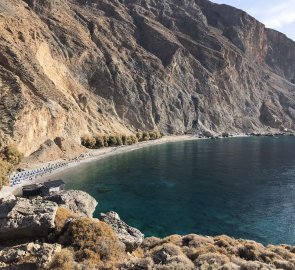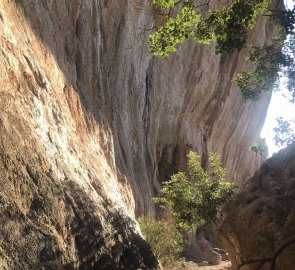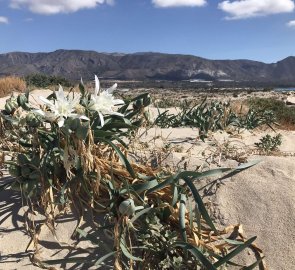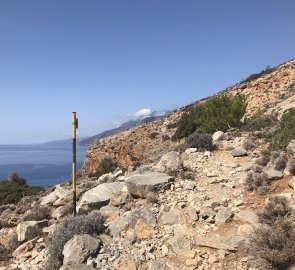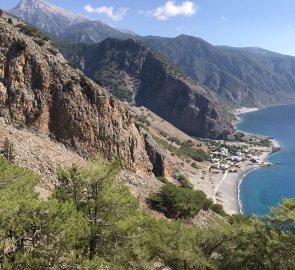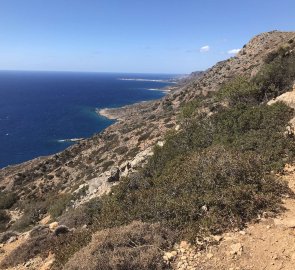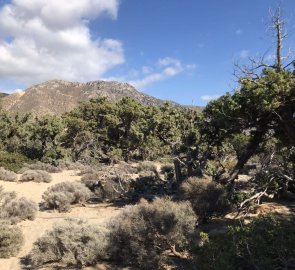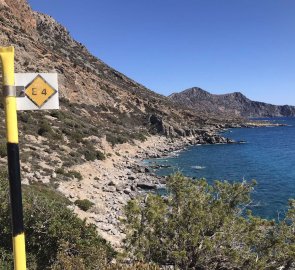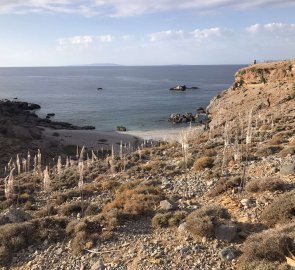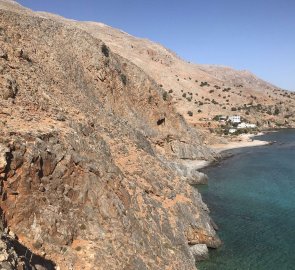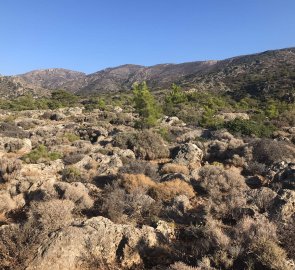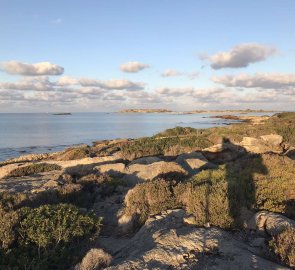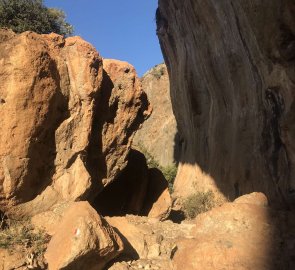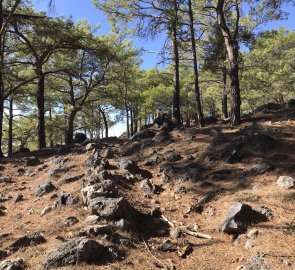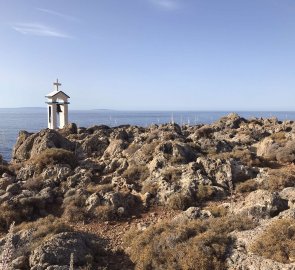Crossing Crete hike E4 along the coast
Mountain range, region / State
Greek island / Greece
Season
Fall
01. 10. - 06. 10. 2024
Difficulty
3 / 5
Elevation
↑ 2429 m
↓ 2415 m
Length
70.4 km
6 days
Altitude
max. 28 m n.m.
min. 1 m n.m.
Tourist map of Crete
E4 multi-day trek across the island of Crete
Starting point
My starting point for the E4 trek in Crete was Sougia, where there are several daily bus connections from Chania. The frequency of connections depends on the time of year. However, there are several other locations that are accessible by bus from Chania for this famous trek. Depending on how many stages you want to complete or which direction you choose, you can also start at other places such as Elafonisi beach, Paleochora or the village of Chora Sfakion. These places are also well connected to Chania by regular bus services.
Description of the hike
Difficulty
Multi-day trek (6-7 days) - stages vary in difficulty both in terms of length and terrain. These are stages that can be walked in about 4 -10 hours. The trail runs above the coastline, in places along sandy beaches, but often you will be high above the coastline at the foot of beautiful mountains overlooking the sea.
The trail is not really suitable in summer as most of the trail is shade free. The trail traverses rocky terrain covered in low scrub, often branching off into other trails trodden by the ubiquitous herds of goats. Signage is fairly modest, the yellow and black splashes on the rocks could use a refresh, and in places you'll be guided by yellow and black poles with E4 signs or stone men.
In the varied terrain you will also encounter exposed sections above the cliffs. I highly recommend sturdy footwear and trekking poles. I also encountered a recommendation for long pants because of the overgrowth with thorns, but I did not have a significant problem with this Stages. Although it is the longest and most challenging part, it is also the most beautiful stage, the most varied and wild nature. Agia Roumeli- Loutro- the shortest stretch runs in a rocky cliff. The other stages are easier with less elevation gain. It is always a good idea to start the route early in the morning just after dawn.
Water availability
The possibility of refilling water depends on the season in which you go on the route. In spring, water can be replenished during the stages, in summer and autumn everything is dry and you are left to refill or purchase water at the starting point. The only spring where water can be refilled year round is at Lissos, which is also an archaeological site near Sougia towards Paleochora.
The minimum water per stage in warmer weather ( above 25°) is about 4.5 litres. For the stage Aougia- Agia Roumeli min 6l ( it is better to count on splitting the stage, you will need water for two days). The availability of water in spring is better, there are springs.
Sleeping options
Overnight on the beach. Sougia and Agia Roumeli offer free camping by the beach. The camp in Agia Roumeli even has sanitary facilities and the possibility to recharge what you need. Each village offers overnight accommodation in apartments and small hotels by the beach.
In general, camping outside of officially marked places is forbidden in Greece!
Food
Supplies can be replenished at the start and end point of the stage. The shops are well equipped. There are many tavernas in the villages where you can enjoy a great meal.
